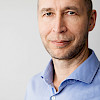Constructor training program for Program Managers
26.5.2011 — 148 program managers participated to this training program, sponsored by the leadership team of Nokia Networks. There were 13 groups with 12-10 participants during 2002-2006. Average feedback was 4.5 / 5.

Abstract
148 program managers participated to this training program during 2002-2006. It was sponsored by the leadership team of Nokia Networks, in order to improve the culture and learn leadership. The training provided Time To Think, tools for understanding and dialogue with the top management. There were 13 groups of 12-10 participants. As feedback they estimated their return on investment to be average 4.5 / 5.
1. History
The design started in May and the first group started in September. Conventional lecturing was not considered, because the programs were very diverse in size, organization, maturity, technology and so on. The experiential learning (action learning) approach was chosen. The design team consisted of an internal coach/owner Ari Tikka, external coach, sponsor and a few other contributors.
2. The structure
Every group has a pair of coaches with equal roles, an internal and an external. The coaches spend considerable time in reflecting what goes on in the group, analyzing the organizational culture and refining the training. During the program there were two internal coaches, Ari Tikka and Kati Vilkki, and two external coaches, Pirkko Tuukkanen and Soile Aho.
The participants were nominated by the businesses.The internal coach interviewed the nominees to ensure the commitment to the nonstandard approach. The training ended with an individual reflection with both coaches present.
After the basic 1+2+2+2+1 days there was a reunion day after 10 months to reflect longer term experiences. Some participants used the opportunity to continue with extra 4 days of reflective learning in groups.
The themes. During the 4 years and 13 groups the themes shifted as the conditions in the organization changed.
3. Coaches experience
- The approach works well in a big diverse organization.
- The length of Constructor, 1+2+2+2+1 days is short for the group process. Some groups really started at the last day. Trust, reflection skills and restorative effects would greatly benefit from a longer process. A bigger dose would have been needed for some themes. On the other hand, the participants were very busy and longer training would have been difficult to sell.
- The background work with sponsors and the organizations of the participants is extremely important.
- The pair work between the internal and external coaches is a great opportunity for the coaches, participants, training and organization.
4. Participant feedback
Feedback was collected a few months after the end of each group. There was a healthy variation in numerical results, some expectations were not met.
- Value for myself, average 4.5 / 5
- General value of the investment, average 4.2 / 5
- Quality of training, average 4.5 / 5
Verbal comments after each training were similar to the following profile study, which was sent to all participants in June 2006. The main purpose of this questionnaire was to check for long term effects. The effectiveness in supporting ones own competence development needs was evaluated 4.1 / 5.
Life is not linear, so we tried to emphasize open feedback. Free comments emphasized concrete changes, meaning and understanding. This hints that learning has integrated to daily life. Some reported a concrete change, for example:
- Changed direction, key trigger in understanding personal interaction difficulties
- I became a change agent, boosted my career and I still love it after 36 months
- Enduring change in own leadership style
- Understanding has made me patient in conflict
- I believe that because of this – I have been more self confident, relaxed, analytical and creative
- I listen and ask what is not talked about
- I take Time To Think
- I manage own feelings
- understanding has improved my change resilience
Some reported perceiving the world in a new way or paying attention to new things:
- Eye opener
- Human aspect is fundamental
- Importance of communication
- Understanding own role/position in the organization
- I see how badly our teams actually perform
- Giving significance to team and people management
- Understanding motivation
- Appreciate feelings
Several stated difference from any other training experience: “Expected tools, found understanding and appreciation of the human aspect”
The collegial support was significant – “Seeing that others are in similar situations, sharing emotional load, networking, sharing best practices”
Some themes were especially remembered like group dynamics, needs and feelings, and change resistance.
A few experienced participants stated that Constructor was the most significant training ever for them.

